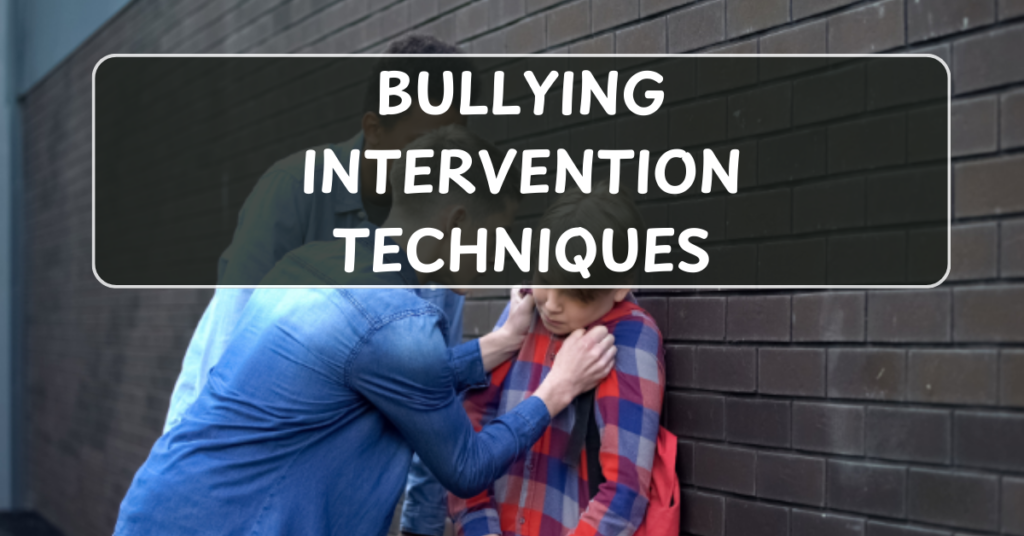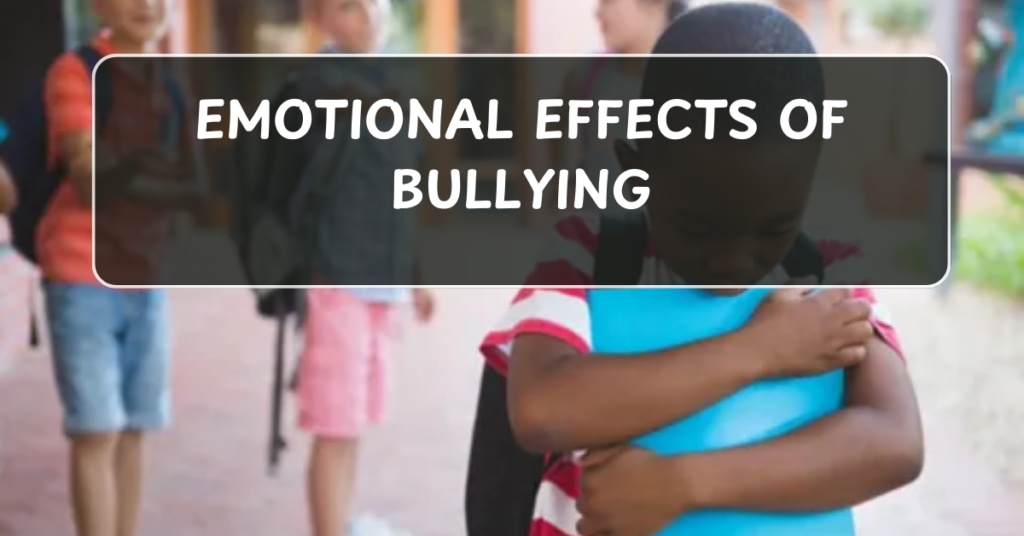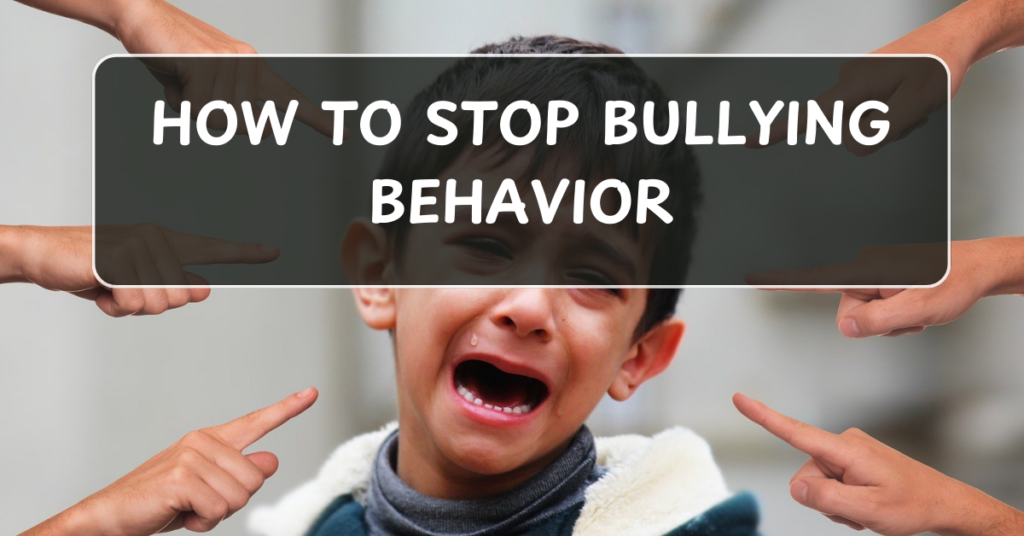
Bullying is a pervasive issue that affects individuals of all ages, whether it occurs in schools, workplaces, or online. When left unchecked, bullying can have serious emotional and psychological consequences for both the victim and the perpetrator. Fortunately, there are various intervention techniques that can help address and stop bullying. By employing these strategies, we can create safer, more supportive environments for everyone.
In this article, we’ll explore effective bullying intervention techniques that can help reduce bullying behaviors and promote kindness, respect, and empathy.
1. Encourage Open Communication and Reporting
One of the most crucial steps in intervening in bullying is to foster an environment where individuals feel safe and empowered to speak up.
- Create a safe space for reporting: Establish confidential channels where victims, witnesses, or even the bully themselves can report incidents without fear of retaliation.
- Promote active listening: Encourage people to listen carefully and without judgment when someone shares their experience with bullying. This can help the victim feel heard and validated.
- Educate on the importance of reporting: Make sure that everyone knows the importance of reporting bullying incidents. Explain that silence can perpetuate the behavior, but speaking up can stop it.
>> Put An END to Bullying NOW: Click Here to Learn How <<
2. Use the “Stop and Walk Away” Technique
For individuals who are witnessing bullying, taking immediate action can be crucial in preventing further harm.
- Interrupt the behavior: If you witness bullying, assertively intervene by calmly telling the bully to stop. A firm but non-confrontational statement such as, “That’s not acceptable,” can make a difference.
- Walk away: Victims or witnesses should walk away from the situation if they feel unsafe. Removing oneself from the environment reduces the bully’s control and avoids escalation.
- Encourage the victim to walk away: Empower the victim to leave the situation by walking away or finding a safer area. This can help them regain a sense of control over the situation.
3. Implement Peer Mediation and Conflict Resolution
Sometimes bullying arises due to misunderstandings or conflicts that could be resolved through communication. Peer mediation programs allow individuals involved in bullying situations to address their issues with the help of a neutral third party.
- Train peer mediators: Identify and train students or employees who can act as mediators in situations involving bullying. These mediators can help both parties understand each other’s perspective and come to a peaceful resolution.
- Use guided dialogue: Mediators should guide the conversation in a structured manner, ensuring that everyone has a chance to speak and that the focus remains on resolving the issue rather than placing blame.
- Set clear expectations: Make it clear that bullying behaviors are never acceptable and that any resolution must respect each person’s feelings, rights, and dignity.
4. Address Bullying at Its Root: Education and Awareness
Education plays a pivotal role in preventing bullying before it starts. By teaching individuals about bullying, its effects, and how to prevent it, we can foster a culture of understanding and empathy.
- Host anti-bullying workshops: Regular workshops and seminars on bullying prevention can help individuals recognize bullying behaviors and understand the importance of treating others with respect.
- Incorporate empathy training: Teaching people to empathize with others helps reduce the likelihood of bullying. Programs that promote kindness, inclusivity, and emotional intelligence can change harmful behaviors.
- Create a zero-tolerance policy: Establish clear anti-bullying policies within schools, workplaces, and communities. These policies should outline the consequences of bullying and promote a culture of mutual respect.
>> Put An END to Bullying NOW: Click Here to Learn How <<
5. Offer Support to the Victims
When bullying occurs, it’s essential to provide emotional support to the victim to help them recover and feel safe again.
- Provide counseling services: Offer access to counseling or therapy to help victims process their emotions and cope with the trauma of bullying.
- Create a support network: Encourage the victim to lean on trusted friends, family members, or coworkers for emotional support. A strong support network can help the individual feel less isolated.
- Empower the victim: Help victims regain confidence by encouraging them to participate in activities they enjoy or pursuing their interests. This boosts their self-esteem and helps them feel empowered.
6. Intervene with the Bully
It’s important to address the bully’s behavior directly to help them understand the consequences of their actions and encourage positive behavior changes.
- Speak to the bully privately: Approach the bully in a non-confrontational way to discuss their behavior. Make it clear that their actions are unacceptable and that they need to change.
- Offer support to the bully: Some bullies engage in harmful behavior due to their own insecurities, difficult home situations, or lack of empathy. Providing support, such as counseling or conflict resolution programs, can help address the root causes of their behavior.
- Set consequences: Make sure the bully understands the consequences of their actions, such as disciplinary measures in school or workplace settings. Ensure that the consequences are consistent and fair.
7. Foster a Positive Environment
Creating an inclusive and positive environment can help prevent bullying from happening in the first place. When people feel valued and respected, they are less likely to engage in harmful behaviors.
- Promote diversity and inclusion: Encourage a culture where differences are celebrated. Activities such as team-building exercises, cultural awareness programs, and inclusive events can foster a sense of belonging.
- Recognize positive behaviors: Reinforce good behavior by praising kindness, empathy, and cooperation. When people are recognized for their positive actions, they are more likely to continue those behaviors.
- Model appropriate behavior: Adults and leaders in the community should model respectful behavior and demonstrate how to handle conflict in a healthy, non-violent way.
8. Encourage Bystanders to Take Action
Bystanders play a crucial role in bullying intervention. When bystanders witness bullying but don’t take action, they unintentionally give power to the bully. Encouraging bystanders to intervene can make a significant difference.
- Empower bystanders: Teach bystanders how to safely intervene when they witness bullying, whether it’s by telling the bully to stop, supporting the victim, or reporting the incident.
- Create a “bystander intervention” culture: Encourage bystanders to view their role as crucial in stopping bullying. Promote a culture where standing up for others is valued and encouraged.
>> Put An END to Bullying NOW: Click Here to Learn How <<
Conclusion: Together We Can End Bullying
Intervening in bullying is not only a matter of stopping harmful behavior in the moment but also about creating a long-term culture of respect, empathy, and inclusion. By using effective bullying intervention techniques, we can address bullying at its core and work toward a future where everyone feels safe and valued. Remember, each individual has the power to make a difference, and together, we can create an environment where bullying no longer thrives.
If you witness bullying, take action—whether it’s through reporting, supporting the victim, or addressing the bully directly. We all have a role to play in stopping bullying and ensuring that everyone is treated with kindness and respect.


